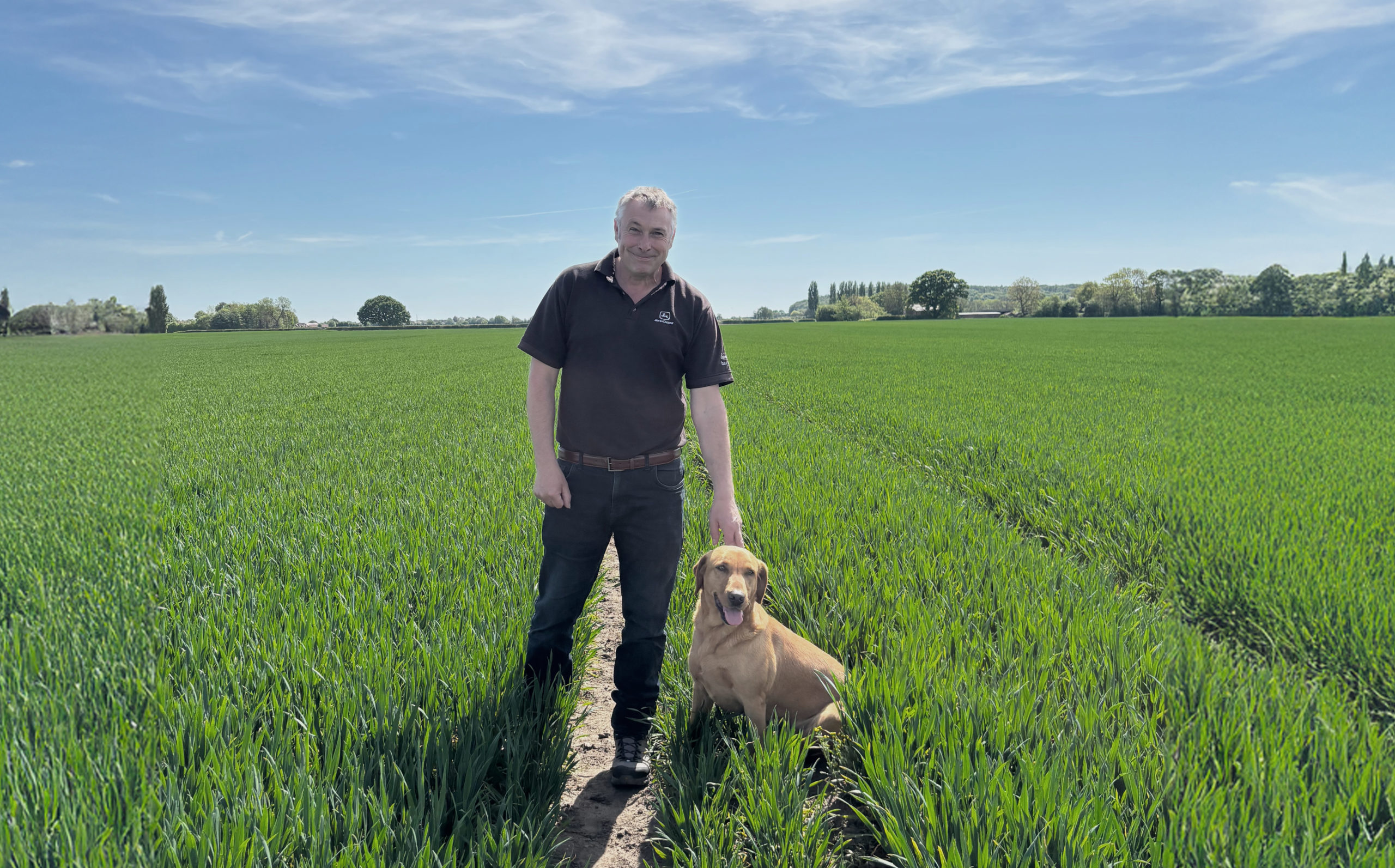Julian Thirsk is an Arable Consultant for Niab. He is responsible for 7,800ha across Yorkshire, Durham and Northumberland, as well as his own 325ha farm located in North Yorkshire.
In this latest blog Julian reflects on last year’s grassweed control, the current challenge and how he’ll be tackling ryegrass and black-grass in the coming weeks.
Last year’s grassweed legacy
“I have been very happy with the ryegrass control we achieved last year.
“Black-grass control, however, was more mixed; we had some clean fields, but there were others that I was disappointed with.
“Those fields with higher or more problematic populations received more chemistry and we got a good result. Luximo worked really well, often with aclonifen added to the mix.
“Where populations were lower and we opted for a flufenacet-based programme, control looked good but wasn’t ‘good enough’.
Persistent dry conditions hinder field work
“Up until last week, conditions here have been exceptionally dry. It has been very frustrating and prevented field work.
“Every farm seems to be facing different cultivation challenges this autumn and decisions are being made almost on a field-by-field basis.
“From the combination of the 23/24 season – which was so wet that soils slumped – and the dry one that is just behind us, there are some fields with soil pans that have needed – or are needing – addressing. Where sub-soiling has been done well, these soils are much more friable.
“There are also fields where it has been difficult to establish a good seedbed. Here, we’ve brought the flat rolls out and left the seedbed to mellow.
“The dry weather also means that some growers have only just started drilling. It’s been too dry for the drills, so only around 5% of winter wheat has gone in the ground so far.
“Those with a grassweed issue will be hanging on a little longer anyway.”
The extent of the grassweed challenge
“The North East is home to some difficult grassweeds.
“On the heaviest land, the black-grass is as ‘good’ as you get anywhere, and the golden triangle around Wakefield, in West Yorkshire, has had some of the most resistant ryegrass in the country. It’s been there for 30 years and famously ‘broke’ Axial (pinoxaden) in just three years.
“Meanwhile, ryegrass has been specifically bred to be vigorous and prolific, but the loss of effective chemistry and reduced tillage exacerbate the issue. Historically, ryegrass seed was periodically buried, preventing germination but this tool isn’t being used as much as it once was.”
Julian’s top tips for controlling grassweeds
“Rotational ploughing can greatly reduce the volume of seed on the soil surface. It can’t be done every year because it will bring ryegrass seed back to the surface where it can germinate. When deployed periodically, and by varying the depth and timing to improve the efficacy, this cultural control can work well.
“My next top tip would be to delay drilling, then it is about the chemistry.
“The difference between ryegrass and black-grass is in their germination. You usually see two or three flushes of black-grass, but ryegrass will just keep chitting.
“In February you might think you’ve done a good job, but by March you’re wondering where all the ryegrass has come from. If there is daylight, ryegrass will germinate. The only way of addressing ryegrass’ extended germination is by maintaining the pressure with residual chemistry.”
Luximo: the cornerstone of herbicide programmes
For ryegrass control, we tend to delay drilling and start at pre-emergence with Luximo + pendimethalin. At peri-emergence we’ll top up with Tower / Tribal (chlortoluron, pendimethalin + diflufenican). Avadex (triallate), does also feature in some ryegrass programmes, if an applicator is available. It isn’t as effective on ryegrass as it is with black-grass but it does bring some additional control.
“When it comes to black-grass control, broadly speaking there are two ‘herbicide programmes’ I recommend. Both pivot around Luximo.
“Which programme is chosen depends on several factors including the extent and resistance status of the population, the timing of applications and soil type.
“Luximo has become the mainstay of my ryegrass and black-grass control programmes simply because it is head and shoulders above everything else in the market.”

